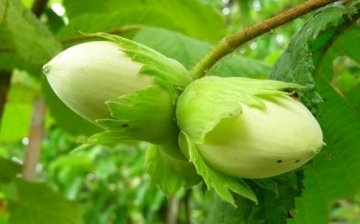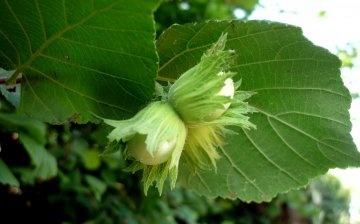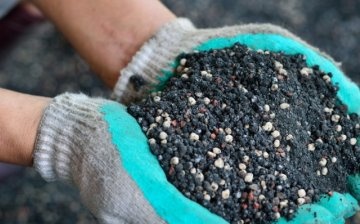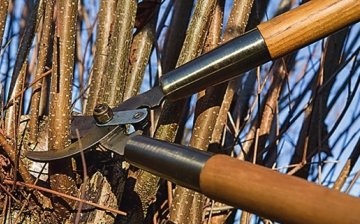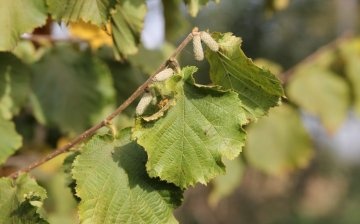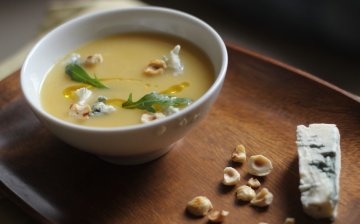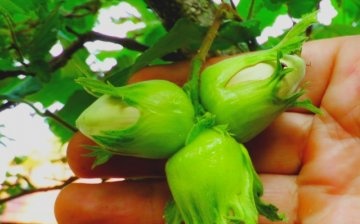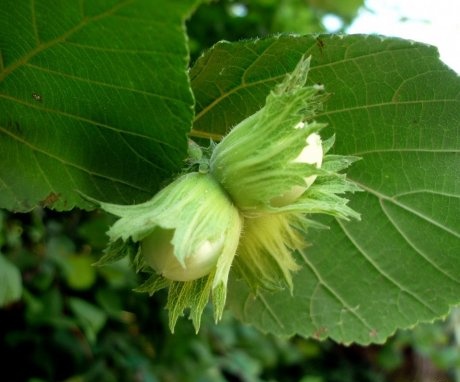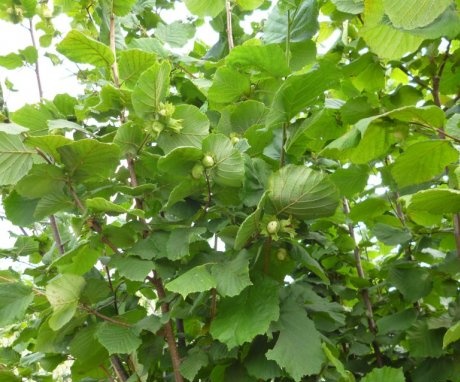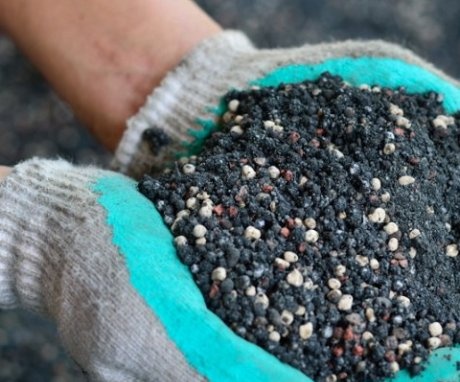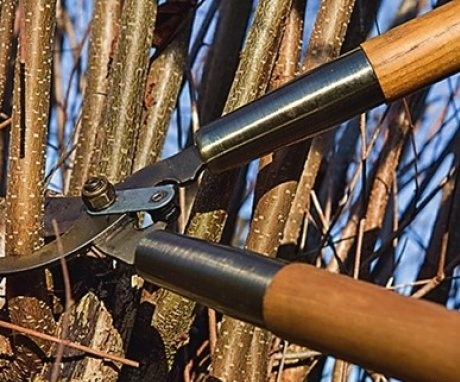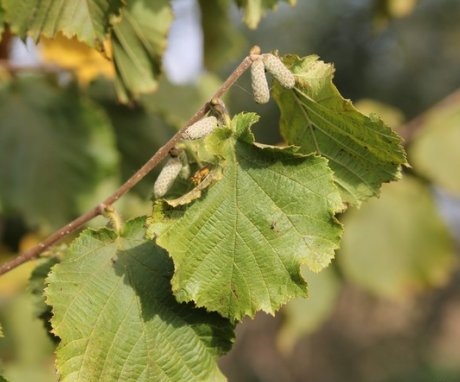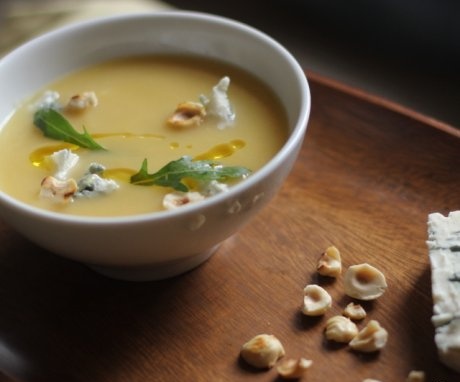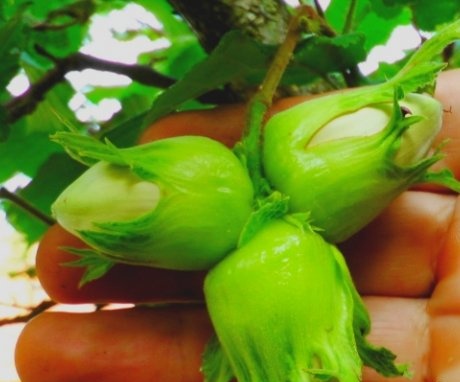Hazelnut Cosford: description, cultivation, application
A large number of different varieties are common in nature. hazelnuts... Cosford is one of the representatives. It is distinguished by its large fruits and thin skin. But in order to grow it, you should know certain rules for choosing a place and a kind of feeding.
Content:
- Description of the variety
- Growing conditions
- Reproduction and planting
- Care tips: watering, feeding
- Pruning and preparing for winter
- Diseases and pests
- Application
- The composition and properties of hazelnuts
Description of the variety
Hazelnut - a kind of hazel, which was domesticated and planted at home. The plant originates from the genus of walnut, living for a long period of time. The birthplace of the hazelnut is England, a territory called Cosford. It was first raised in 1816.
Features and benefits of the variety:
- It is presented in the form of a shrub with high erect ligneous shoots stretching up to 7 meters in height.
- Its branches are long, thick in volume, pubescent with leaves, which can be either long or oval. Towards the end, the leaf is crowned with a pointed tip, and there are small notches along the edge. The leaf blade prints well all the veins, making the surface embossed.
- The plant produces inflorescences in an interesting period - from December to the last days of March. The flowers of the male-type plant appear in the form of earrings. And the female inflorescences are small, almost invisible buds, with barely visible stigmas of a red hue.
- A distinctive feature of Cosford is resistance to frost at -30 C. Such a low temperature does not affect the flowers, which makes it possible to get a good harvest of nuts.
- Nuts are large, slightly long, dense, with a bulky core. They do not stick tightly to the green rind and easily fall out of it when ripe. The cultivated variety differs from wild plants in its thin shell structure. Ripening is recorded in the last decades of September.
Prefers a warm climate, protected from piercing winds. In addition to the fact that the walnut independently pollinates its flowers, it acts as a pollinator for some other species of hazelnut.
Growing conditions
Cosford is an unpretentious plant, if all the conditions for its planting and placement are met, then you can expect good growth and abundant fruiting.
To achieve these results, the following placement options are recommended:
- Planting site - the place should be sunny, not darkened, spacious, so that a large shrub can not only grow in breadth, but also root deeply.
- Windproof - Swept open areas are not suitable for the delicate foliage of Cosford. Also, with strong gusts of wind, some of the fruits are lost.
- The plant should not be planted on dry sandstones, wetlands, or extremely salty soil types.
- The best option would be a fertile soil rich in nutrients and trace elements. In addition, it is recommended that it be airy and loose, with a neutral acidity.
- Severely compacted, heavy and cold soils have a bad effect on cuttings. It stops growing and stops growing, let alone bearing fruit.
- It does not matter on what surface the shrub grows - on flat areas or on slopes. If the plant is placed on a slope, then it strengthens the rolling earth with its roots. But for such a landing, it is recommended to slightly level the slope by making a special hole.
- Cosford loves moisture very much, so planting it is advisable near a vast reservoir or in places where the water table is high enough.
It is necessary to plant the plant in the fall, preferably in mid-October, while the weather is warm and rainy enough. Also, planting work can be done in the spring months, but then you need to monitor the normal moisture of the soil. Otherwise, the plantings will dry out from lack of nutrient moisture.
Reproduction and planting
Shrub propagation occurs with the help of seeds, as well as by cuttings and layering. It is worth noting that different species varieties have a peculiarity to carry out division in different ways.
There are several ways of vegetative division:
- Shrub division - the excavated mother bush is divided into several parts. Each of the divisions contains its own shoots and developed root system... This method of reproduction fully preserves all the maternal characteristics of the plant variety. When planting such delenki, the branches are cut by 2/3 of the total length. Within 3-4 years, the plant completely restores the crown and begins to bear fruit.
- Digging out the shoots from the rhizomes - when the shoots are formed from the root, it is dug out deeper and the main root is cut down with an ax or improvised material. After that, special cuts are made at the root, along which the plant takes root faster.
- With a bow - annual shoots are selected, small trenches are dug at their base. A young branch fits into this groove and is secured with a special bracket or hook. From above, soil is poured into the place of attachment. During the summer and winter, the branches take root and independently begin to feed through the ground. It remains only to cut the stalk from the mother bush and transplant it to a new place of residence.
- By layering - the procedure for choosing a young shoot and digging a trench is identical when propagating with a bow. But unlike the previous method, no earth is poured onto the pinched place from above. So one branch from the mother bush is pinched up to 5 times on one vine. From the buds that are located on the shoots, there are vertical shoots. During development, the vine takes root and takes root completely. Thus, 5-6 young bushes are obtained from one branch. In the summer months, when young growth reaches 15-20 cm, each bush is spud up with soil and separately provide abundant watering.
- Vaccinations - a laborious and not always justified way of getting a new variety on an old bush. The grafting procedure is carried out only in the spring months. In most cases, it is used only by experienced gardeners.
- With the help of seed growing, nuts are used. The main feature and disadvantage of this method is that the resulting plant does not retain its maternal characteristics.
For planting, choose large, fully ripe fruits that do not have damage or mechanical injuries. They preliminarily perform natural stratification (they are kept for several weeks in a cold room), and in the spring they are planted in prepared flowerpots, waiting for the moment of germination. Grown in this way, Cosford can begin to bear fruit only in the 7-10 years of its life.
Care tips: watering, feeding
With good plant care, large, full fruits can be expected. To obtain a bountiful harvest, watering should be carried out constantly. The introduction of nutrient moisture is especially important when the dry season begins.In the southern regions, this time begins from mid-May. If you do not feed the plant with water, then the nuts are small, half-empty, poorly formed. In addition, the number of fruits decreases sharply.
It is imperative to apply top dressing under the shrub, it is carried out annually with the help mineral fertilizers. Organic dressing it is not recommended to apply more than once every 3 years. The process provokes high yields and improves the taste of forest products.
Organic matter is required in the following amount:
In addition to the fertilizer, a small amount is mixed (100-200 gr.) nitroammophos... In June, fertilizing with urea is carried out - with a solution of 0.5% essence. Do not abuse nitrogen-containing fertilizers. They will provoke abundant growth of green shoots and foliage, but at the same time, they will significantly reduce the yield of Cosford.
Pruning and preparing for winter
Pruning directly affects the amount of fruit harvested. Also, the removal of excess growth affects winter hardiness and disease resistance. There are two types of trimming:
- Stamper
- Shrub.
Pruning is done either in the fall or early spring. The main goal of the activities carried out is to discharge the thickened core so that all the shoots get enough sunlight and oxygen. This procedure provokes not only the sparseness of the branches, but also the provocation of the growth of young replacement shoots.
For the formation of the plant, thin, weak and non-fruiting shoots are removed from the core.
Leave only strong and large, capable of producing large yields. The crown formation procedure must be completely completed before the first fruits appear on the branches. Rejuvenating pruning is carried out at the moment when hazelnuts are 10-15 years old. During this period, 3-4 old trunks are removed, and the young are significantly shortened. This method allows you to provoke the growth of new shoots and the gradual replacement of old branches.
In most cases, only young shoots are sheltered for the winter. They are bent to the ground and secured with pins. After that, a snowdrift of spruce branches is piled on top. Such a measure is necessary if a non-snowy winter with severe frosts is expected.
Diseases and pests
Cosford is not resistant to animal and insect pests. Shrubs can be attacked by squirrels, wild boars, mice or hares. Everyone loves to feast on delicious nuts. Of insects, the weevil beetle and longhorn beetle, as well as butterflies and caterpillars, often settle on the shrub.
When a bush is affected by a weevil and a barbel, the fruits become wormy, crumble for no reason and come across completely empty. To eliminate parasites, the area where the hazelnuts are located is dug up and the plant is treated with chemical insecticides.
Spraying from parasites is carried out in the spring, at the moment when they first appear, full healthy nuts are the result of exposure.
In addition, the bush tends to be amazed powdery mildew... Spider web-like mold forms on the leaves. Subsequently, this place turns black and dries up. If an infection is detected, all damaged leaves are removed from the tree and burned. Bare branches are sprayed with colloidal sulfur, lime-sulfuric solution, or other chemicals to fight disease.
Therefore, for prevention, all fallen leaves are removed from the site and burned. If you follow and control the condition of the plant, then the appearance of the first signs of the disease can be noticed immediately and eliminated as soon as possible.
Application
Hazelnut Cosford is actively used in both culinary and industrial production. In addition, it can be consumed raw. Nuts are used in chocolate, halva, candy cakes and various cookies. In ground form, it is used for food additives in fish, meat and vegetable dishes.
It is used in nutrition by vegetarians, since its protein composition fully corresponds to meat products and dairy products. At the same time, a low level of sugars and carbohydrates makes it possible to consume the product in small quantities for patients with diabetes mellitus. It is successfully used in dietetic food.
Shows its useful properties in cosmetology and medicine.
In addition, we must not forget about its interesting appearance. An interesting color scheme (red, orange or yellow tones) allows you to create interesting compositions on your personal plot. The bushes can be used as hedgeas well as for growing nuts for business purposes. Thus, the application of Cosford is so diverse that it is quite in demand in all areas of human life.
The composition and properties of hazelnuts
Hazelnut endowed with a large number of micronutrients and vitamins. The latter, when consumed in a reasonable amount, provoke a positive therapeutic effect on the state of the body:
- Cosford nuts contain a large amount of mineral elements, as well as useful vitamins (B, C, E, A).
- Polyunsaturated fatty acids provide an improvement in metabolic processes, favorably removes stagnant feces from the intestines.
- When nuts are combined with raisins and dried apricots, the composition has a positive effect on cardiovascular ailments, provoking improvements in treatment.
But hazelnuts are a strong allergen, therefore, children under 3 years of age are advised to control their consumption in food in large quantities.
Thus, Cosford is a large walnut grown on English estates. Achieving high yields requires careful maintenance, formative pruning and control of soil moisture. Otherwise, the bush will overgrow and run wild.
More information can be found in the video:



